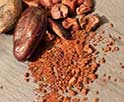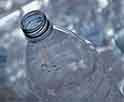Cancer and Cookware: Understanding the Risks and Safe Alternatives
The Healthiest Cookware: Protecting Your Family from Cancer-Causing Materials
Reading time : 1 minute,
Discovery Chepe Id-773-SAL
Published in
06-26-2025

Photo: Mazda Mehrad
When it comes to health, what we eat matters -but so does how we cook it. Recent studies have revealed that certain materials used in common cookware like pots, pans, and casseroles may pose serious risks, including a possible connection to cancer. As consumers grow more health-conscious, it's essential to understand which kitchen materials to avoid and what safer alternatives exist.
Materials to Avoid: The Hidden Dangers in Your Cookware
1- Teflon and non-stick coatings (PTFE and PFOA): These coatings, while convenient for cooking, can release toxic fumes when overheated. Studies have shown that long-term exposure to PFOA, a chemical formerly used in Teflon, may be linked to several types of cancer, including kidney and testicular cancer. Although PFOA has been phased out in many countries, older pans may still contain it.
2- Aluminum: Uncoated aluminum cookware can leach into food, especially when cooking acidic ingredients like tomatoes or lemon. Some research has associated high aluminum exposure with neurodegenerative diseases and has raised concerns about potential links to breast cancer.
3- Copper (without lining): Pure copper cookware, if not lined with a safer material such as stainless steel, can also leach into food. Excess copper in the body can lead to toxicity, affecting the liver and kidneys over time.
4- Plastic utensils and containers: Some plastic materials release harmful substances like BPA and phthalates when heated. These chemicals are known endocrine disruptors and have been linked to hormone-related cancers like breast and prostate cancer.

Switch to Safe: Healthy Cookware Options for a Cancer-Free Life
Photo: Aurelien Thomas
Healthier Alternatives: Cookware That Cares for Your Body
Thankfully, safer options are available. These materials offer peace of mind while maintaining performance in the kitchen:
a) Stainless Steel: Highly durable and non-reactive, stainless steel is excellent for cooking a wide variety of foods. It doesn't leach harmful chemicals and is generally considered one of the safest options.
b) Cast Iron: When properly seasoned, cast iron becomes naturally non-stick. It also adds a small amount of iron to your diet, which can be beneficial, especially for those with anemia.
c) Glass and Ceramic: These materials are non-toxic and do not leach chemicals. They are ideal for baking and storage. Always choose high-quality, lead-free ceramic and tempered glass.
d) Enamel-Coated Cookware: Enamel provides a safe, non-reactive surface over cast iron or steel. Just ensure the enamel is free from chips or cracks.
The Cancer Connection: What Science Says
The link between cookware and cancer is still under scientific investigation, but mounting evidence suggests that long-term exposure to certain toxic materials can influence cancer risk. According to the American Cancer Society, environmental exposure including household items can play a role in cancer development. Materials like PFOA and BPA have been classified by some health agencies as possibly carcinogenic, meaning they could contribute to cancer under certain levels or conditions.
While definitive answers require more research, many experts recommend applying the precautionary principle: if a material is suspected to be harmful, it's best to avoid it.
Consumer Awareness and Industry Response
Growing awareness has led many manufacturers to offer PFOA-free or non-toxic labels on their products. However, not all claims are regulated, so it's important to research and verify product safety. Organizations such as the Environmental Working Group (EWG) provide valuable information about household toxins and cookware ratings.
It's Time to Cook Smarter
The materials we use daily in the kitchen can have a significant impact on our long-term health. By choosing safer cookware and avoiding harmful substances, we not only protect ourselves but also those we cook for. In a world where cancer rates continue to rise, making informed decisions -right down to our pots and pans- can be a powerful step toward prevention.
Related reading: Toxicology of food contact materials
FDA on Food Contact Substances
See Also
Discovery Chepe
Most read...














